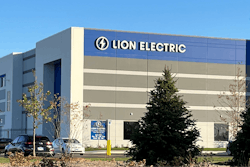
The day when busmakers stop making diesel engines and move entirely to alternative power platforms is coming sooner rather than later, experts on a Center for Transportation and the Environment webinar said Thursday.
[RELATED: Feds announce billions in funding for clean buses]
Members of the panel were Mike Finnern, vice president and general manager at Proterra; Rick Mason, vice president of nextgen solutions at Plug; Michael McDonald, operations manager, Vehicle Innovation Center; and John Hroncich, BAE Systems.
“Every year, there’s a pretty significant bump in technology,” Finnern says. Batteries get lighter and more efficient. Materials get lighter and easier to make. In the case of hydrogen, the infrastructure gets better.
Agencies, by and large, have two zero emissions choices at present: Battery electric and hydrogen fuel cell. McDonald says choosing the right fuel for your fleet comes down to location and plain old preference.
[RELATED: Goodyear launches bus tire]
“There’s so many factors here,” he says, pointing to things like the cost and availability of electricity or natural gas, the climate and its changes through the year, and the preference of agency leadership.
Either way, the panel says diesel’s days are numbered.
Mason says Plug builds hydrogen supply into its contracts and has maintained 99% availability across its fleet. By 2025, the company expects to produce 500 metric tons of green hydrogen per day, rocketing up to 2,000 metric tons per day by 2030.
Proterra says the key to its buses’ reliability are the ownership of the supply chain all the way down to the batteries. It recently opened a new battery facility close to its South Carolina manufacturing plant.
“Owning the staff and the manufacturing allows us to take advantage of [incremental improvement in batteries year over year],” Finnern says. He adds Proterra continues to see positive trends in terms of battery life and degradation from its customers.
Hroncich also says BAE is seeing a steady drumbeat of improvement in their systems. The company recently switched from silicon to silicon carbide for switching, finding the newer compound was more efficient and required less cooling. The company has also cut down on cabeling, harnessing and connections, achieving 90% power retention through the system.
That makes buses using BAE equipment more efficient.
All of the companies are also working with agencies to overcome workforce challenges. Finnern at Proterra says there are “boatloads” of federal money available for training, agencies just have to be creative in applying for it.
Supply chains are another area where the panelists reported progress this year.
“The shock-and-awe, rock-and-roll disruptions of 12 to 24 months ago is reduced,” Hroncich says, but lead times for power electronic components remain high. McDonald says at NFI, they work with the market to try and fit all of their production capacity.
“Everyone is sleeping a little better at night,” McDonald says.









